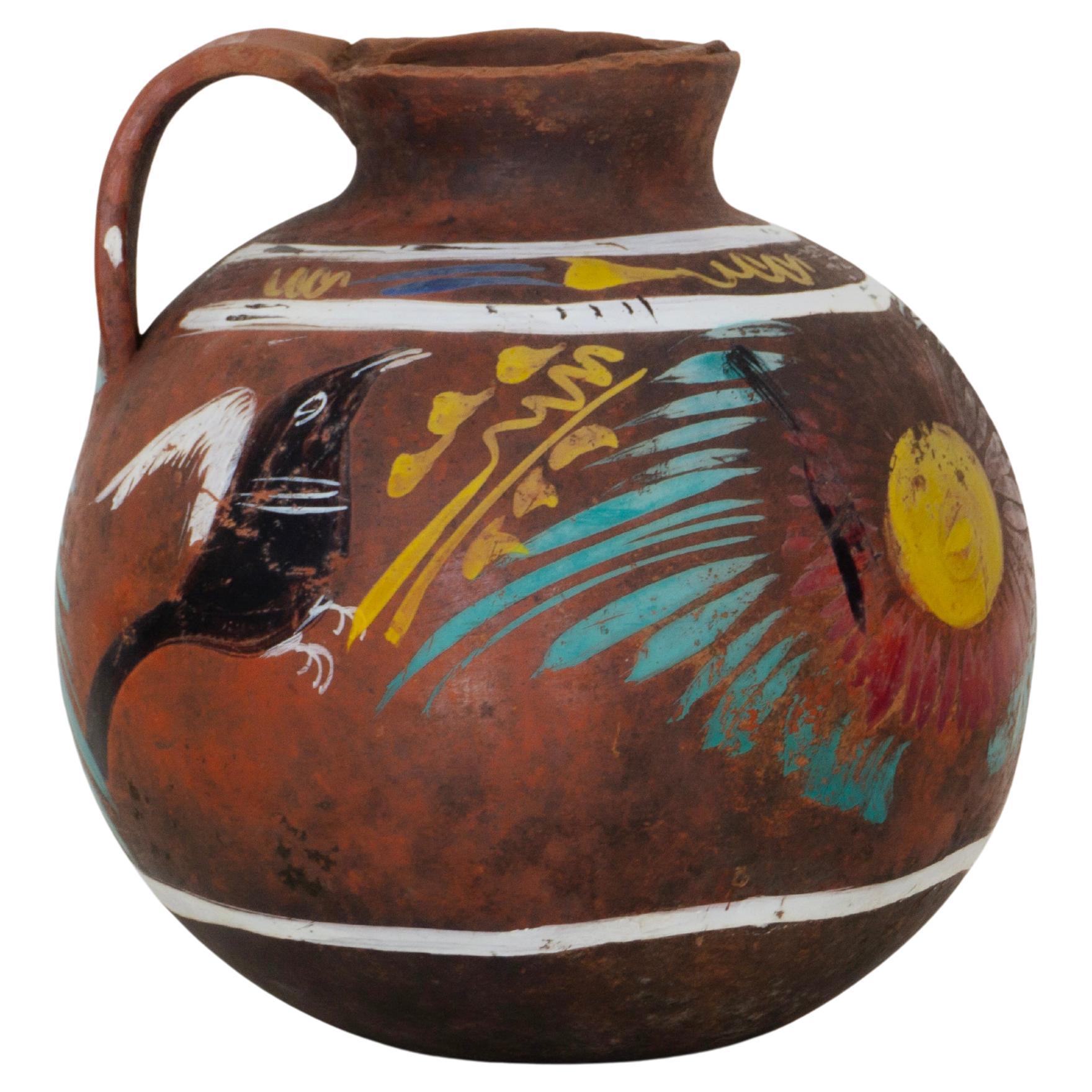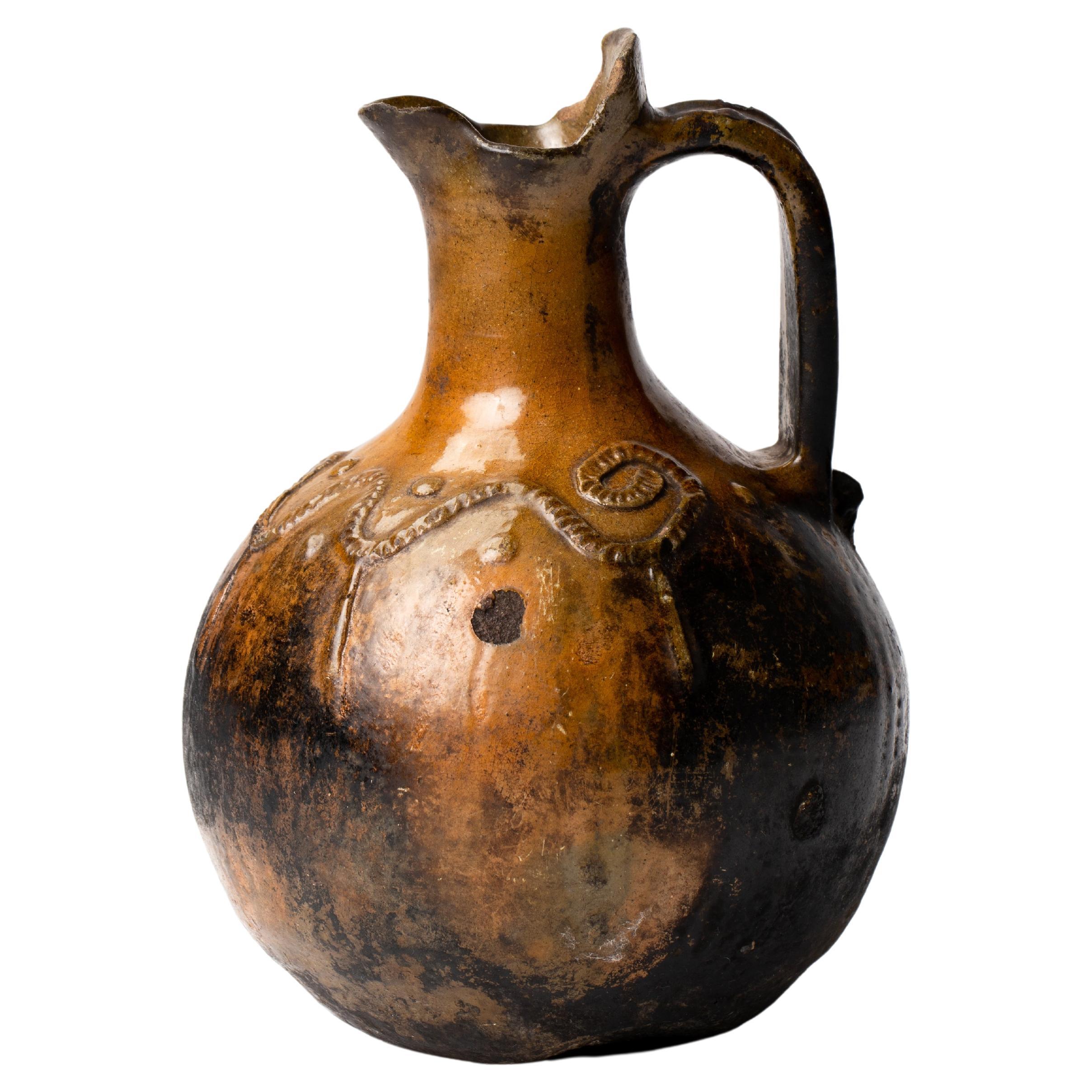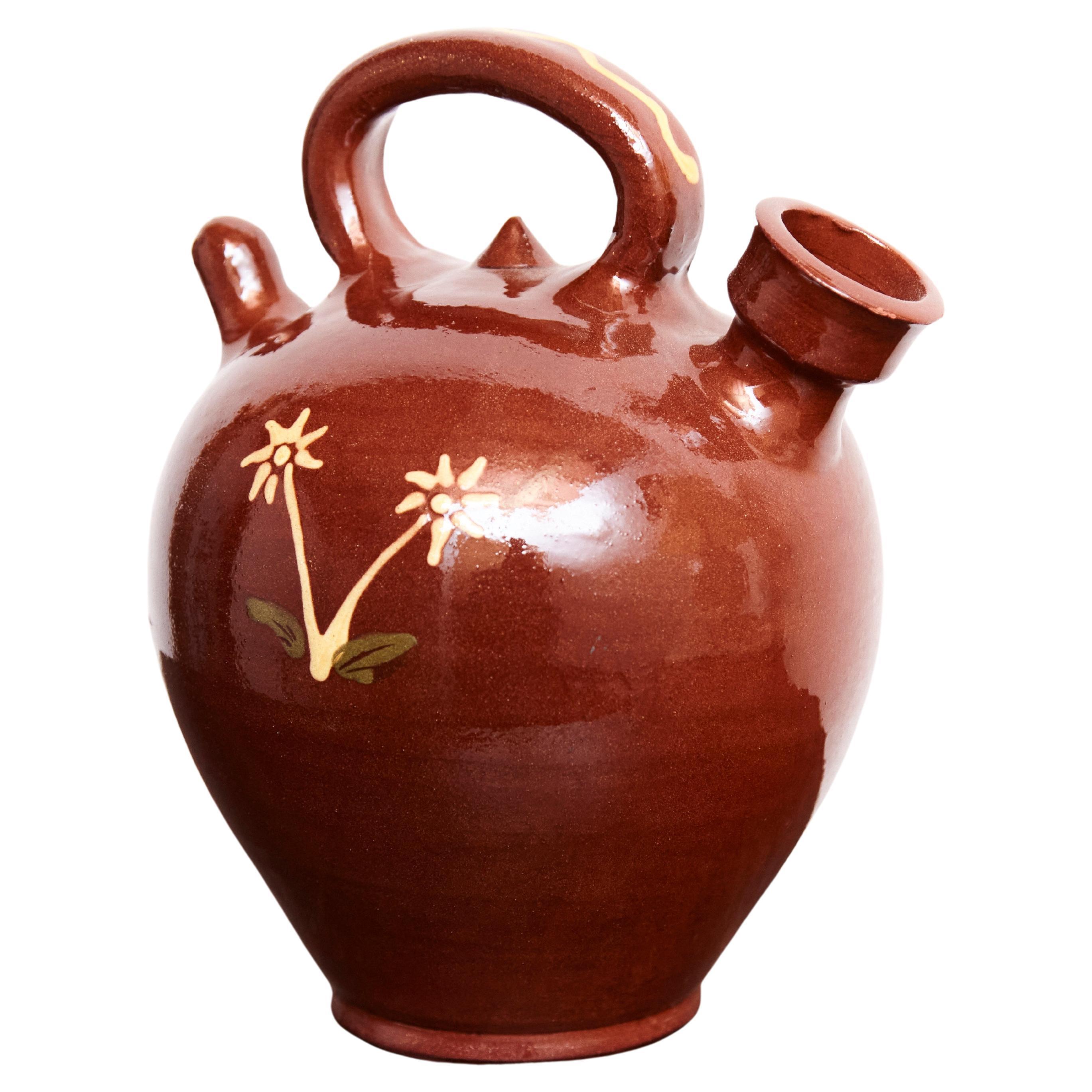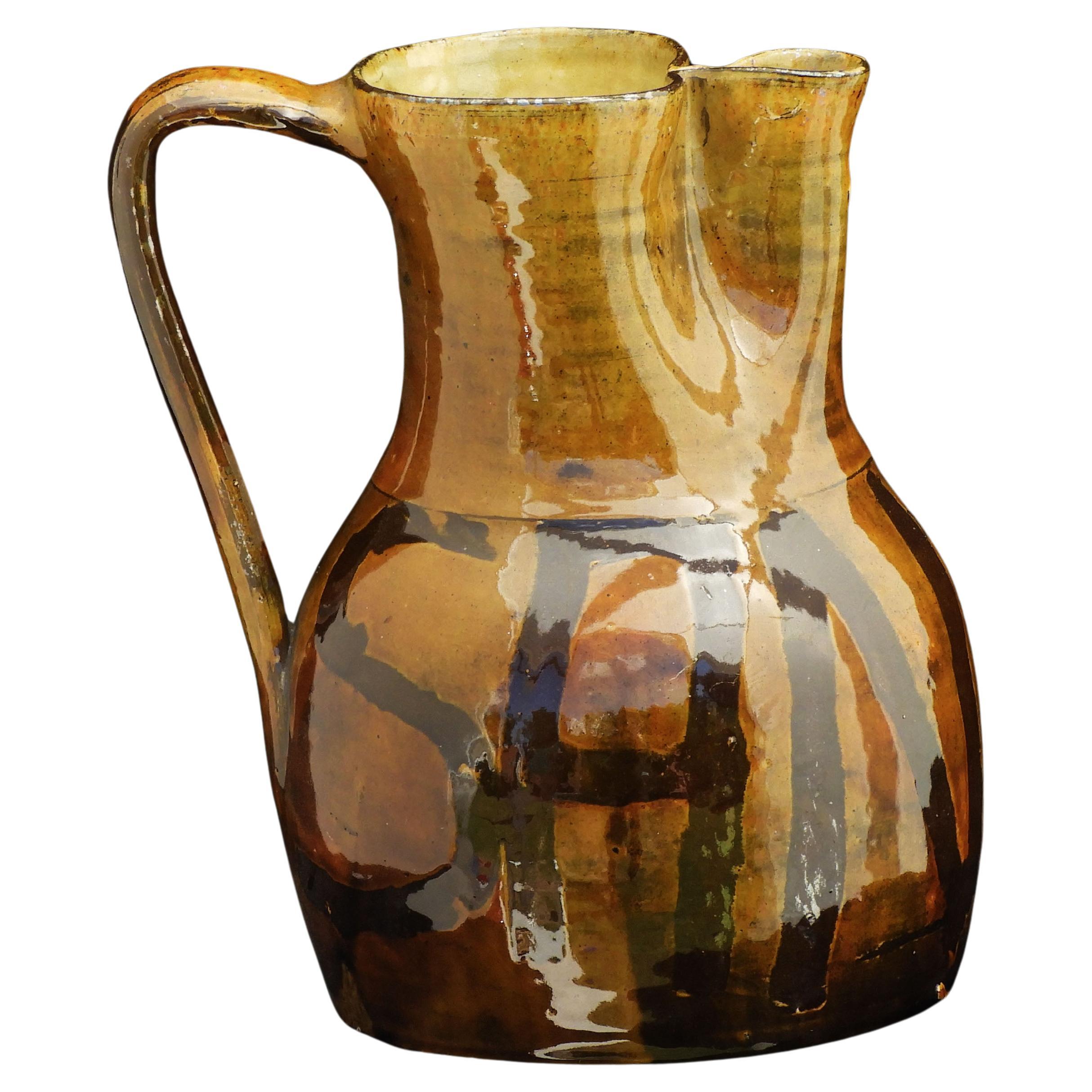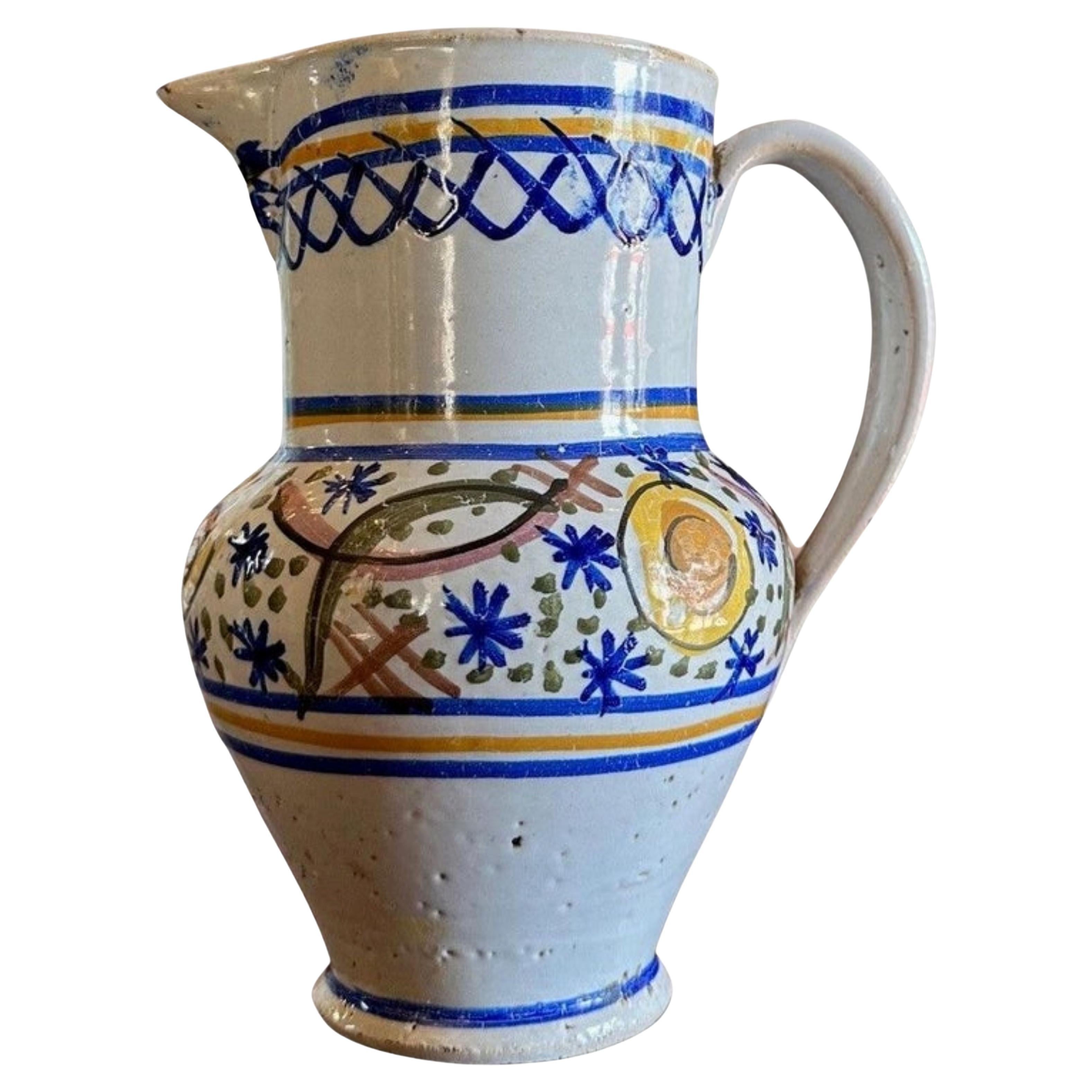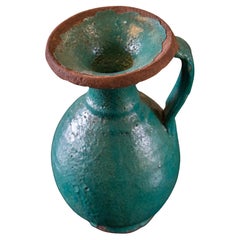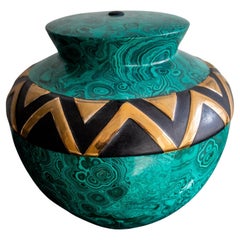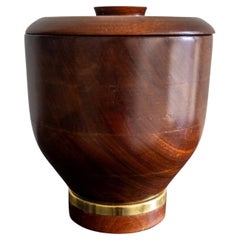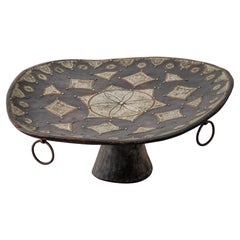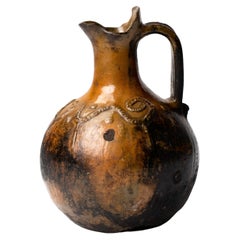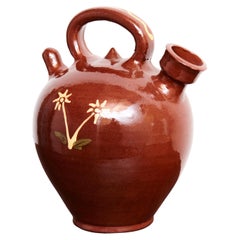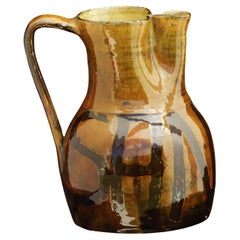Items Similar to Tlaquepaque Tonala Jug, Tonalá, Jalisco, Mexico, C1940
Want more images or videos?
Request additional images or videos from the seller
1 of 6
Tlaquepaque Tonala Jug, Tonalá, Jalisco, Mexico, C1940
$274.08
£200
€233.33
CA$375.43
A$417.56
CHF 218.04
MX$5,081.22
NOK 2,784.64
SEK 2,611.50
DKK 1,741.45
Shipping
Retrieving quote...The 1stDibs Promise:
Authenticity Guarantee,
Money-Back Guarantee,
24-Hour Cancellation
About the Item
A wonderfully decorative earthenware jug from the Tonala valley, depicting a ‘Tlaquepaque’ scene with the most beautiful glazed artisanal composition. Graphic vivid colours depicting sleepy chaparral life, cacti and flora. In the 20s and 30s just outside Guadalajara and its neighboring pottery communities of San Pedro Tlaquepaque and Tonalá, you could find an immense thriving artistic center of pottery that had a 400-year tradition in the region. Tonalá was a thriving community of artisans steeped in the clay traditions, all living and working next to each other. Two styles emerged, one of twice fired clay that was dipped in a lead oxide bath for its second high firing, the other derived from the Pre-Columbian era. As the decades progressed and the roads got wider, pottery centers in nearly every state became sought after by the tourists and collectors. Artist families grew and made their livelihood from it and it is these pieces that modern collectors seek out. Though, at the forefront, it is Tlaquepaque and Tonalá that many antique and Mexican Folk Art collectors seek out today.
Reference: Donna McMenamin’s book, Popular Arts of Mexico 1850-1950, after its publication things drastically changed—increasing both the exposure and value of this pottery.
- Similar to:Pre-Columbian (Artist)
- Dimensions:Height: 16 in (40.64 cm)Width: 17 in (43.18 cm)Depth: 20 in (50.8 cm)
- Style:Folk Art (In the Style Of)
- Materials and Techniques:
- Place of Origin:
- Period:
- Date of Manufacture:1940
- Condition:Wear consistent with age and use.
- Seller Location:London, GB
- Reference Number:1stDibs: LU2276329953512
About the Seller
5.0
Vetted Professional Seller
Every seller passes strict standards for authenticity and reliability
Established in 2009
1stDibs seller since 2016
89 sales on 1stDibs
Typical response time: 5 hours
- ShippingRetrieving quote...Shipping from: London, United Kingdom
- Return Policy
Authenticity Guarantee
In the unlikely event there’s an issue with an item’s authenticity, contact us within 1 year for a full refund. DetailsMoney-Back Guarantee
If your item is not as described, is damaged in transit, or does not arrive, contact us within 7 days for a full refund. Details24-Hour Cancellation
You have a 24-hour grace period in which to reconsider your purchase, with no questions asked.Vetted Professional Sellers
Our world-class sellers must adhere to strict standards for service and quality, maintaining the integrity of our listings.Price-Match Guarantee
If you find that a seller listed the same item for a lower price elsewhere, we’ll match it.Trusted Global Delivery
Our best-in-class carrier network provides specialized shipping options worldwide, including custom delivery.More From This Seller
View AllBeautifully Aged Vintage Tamegroute Pitcher / Vase C1920s
Located in London, GB
Original Tamegroute eathernware pitcher with vivid iconic deep green glaze specific to this small town on the edge of the Sahara. This version showing the qualities of earlier pieces...
Category
Vintage 1920s Moroccan Tribal Vases
Materials
Ceramic, Earthenware
A malachite finish ceramic urn by Tomato Barbi, Milano 1970
By Tommaso Barbi
Located in London, GB
Impressive centrepiece in ceramic by Tommaso Barbi, decorated in his signature malachite finish with feature gilt zig zag frieze on black band.
Category
Vintage 1970s Italian Mid-Century Modern Urns
Materials
Ceramic
An ice bucket by Alexandre Noll, France 1950s
By Alexandre Noll
Located in London, GB
Exquisite work by Noll in turned walnut, with mounted brass base and glass liner.
Category
Vintage 1950s French Mid-Century Modern Barware
Materials
Walnut
Touareg High Footed Cedar Dish Inlaid with Hand Patterned Silver Relief 19th C
Located in London, GB
A stunning early work dating form the late 19th century from the South Western Sahara region of Morocco by the Touareg peoples. Impressive in scale, with intricate copper mounted sil...
Category
Antique Late 19th Century Moroccan Tribal Centerpieces
Materials
Silver, Copper
Beautiful Art Glass Vase with Purple Wave Pattern, Signed Vasart, 20th Century
By Vasart
Located in London, GB
A vivid pale green and pink art glass vase with swirling purple wave pattern Of convenient bucket shape. To the base is the raised button pontil ty...
Category
20th Century Scottish Glass
Materials
Art Glass
$198 Sale Price
47% Off
A rare Valsuani silvered bronze vase of prancing horses, Paris 1930
Located in London, GB
A silvered bronze vase with a frieze of prancing horses, bears incised monogram of French foundry Valsuani. Signed M Divani.
Marcello Valsuani emigrated from Italy to France and wor...
Category
Vintage 1930s French Vases
Materials
Silver, Bronze
You May Also Like
Antique Mexican Clay Decorative Jug. Benedicto. XX Century. Herencias Collection
Located in Guadalajara, MX
Antique Mexican clay decorative jug with a beautiful details and special decoration of nature and animals handpainted and represented by mexican artisans.
Made in San Luis Potosi Sta...
Category
20th Century Mexican Other Jars
Materials
Ceramic, Clay, Earthenware, Pottery
Antique Spanish Colonial Majolica Pottery Water Vessel Pitcher
Located in New York, NY
Spanish Colonial majolica pottery water pitcher / vessel from the highlands of Guatemala. This piece has such character, with majolica glaze and traditional decorative design applied...
Category
Antique 19th Century Guatemalan Spanish Colonial Ceramics
Materials
Pottery
Ceramic Hand Painted Traditional Spanish Jug, circa 1960
Located in Barcelona, ES
Traditional Spanish jug vase, circa 1960. Manufactured in Spain. In original condition, with minor wear consistent of age and use, preserving a beautiul ...
Category
Vintage 1960s Spanish Mid-Century Modern Ceramics
Materials
Ceramic
Spanish Folk Art Sangria Pitcher C1950
Located in Trensacq, FR
Spanish Folk Art Sangria Jug or Wine Pitcher Early 20th Century.
Wonderful yellow ochre high glaze flat-bottomed ceramic vessel. Beautiful and practica...
Category
Vintage 1950s Spanish Folk Art Pitchers
Materials
Ceramic
$209 Sale Price
50% Off
Ceramic Pulque Canteen From Coyotepec, Oaxaca, Circa 1950´s
Located in San Miguel de Allende, Guanajuato
Ceramic pulque / mezcal canteen from Coyotepec, Oaxaca, circa 1950´s showing agave motif design on the front side. The canteen has been hand crafted using black clay from San Bartolo...
Category
Vintage 1950s Mexican Folk Art Ceramics
Materials
Ceramic, Clay
18th Century Spanish Talavera De La Reina Pitcher Jar Bucaro Botijo Antiques LA
By Artesania Talaverana
Located in West Hollywood, CA
18th Century Spanish Talavera De La Reina Pitcher Jar Bucaro Botijo Antiques LA Centerpiece Rustic. A beautiful 18th-early glazed ceramic pitcher jar made in Talavera de la Reina, Spain known for its ceramic tradition since the Roman times. Also called " búcaro " or botijo. these pitchers were made especially for holding water, or holy water, flowers.
Most often they were made for the important homes and for wealthy families and some were made for convents and monasteries, and they would feature crests or coats-of-arms associated with various religious orders. this piece has stunning patterns and colors, the infinity in blie with yellow gold colors with the sun and the stars. Faience, natural clays and enamels , always conserving the traditional method dating back to the 16th century. Not to confuse this beautiful piece with The nice handmade pieces by the artisans from pueblo Mexico...
Category
Antique 18th Century Spanish Pitchers
Materials
Ceramic, Pottery, Paint
$1,760 Sale Price
20% Off
More Ways To Browse
Mexican Jalisco
Pre Columbian Mexican Art
Scene Pitcher
Mexican Tonala
Jalisco Pottery
Mexico Silver Pitcher
Mexican Tonala Pottery
Vintage Tonala
Mexican Tlaquepaque Pottery
Tonala Folk Art Pottery
Old Antique Pitchers
Antique China Jug
Taxco Castillo
Glass Carafes
Large White Pitchers
Vintage Blue Glass Jug
Antique Blue And White Jugs
Brass Jug
